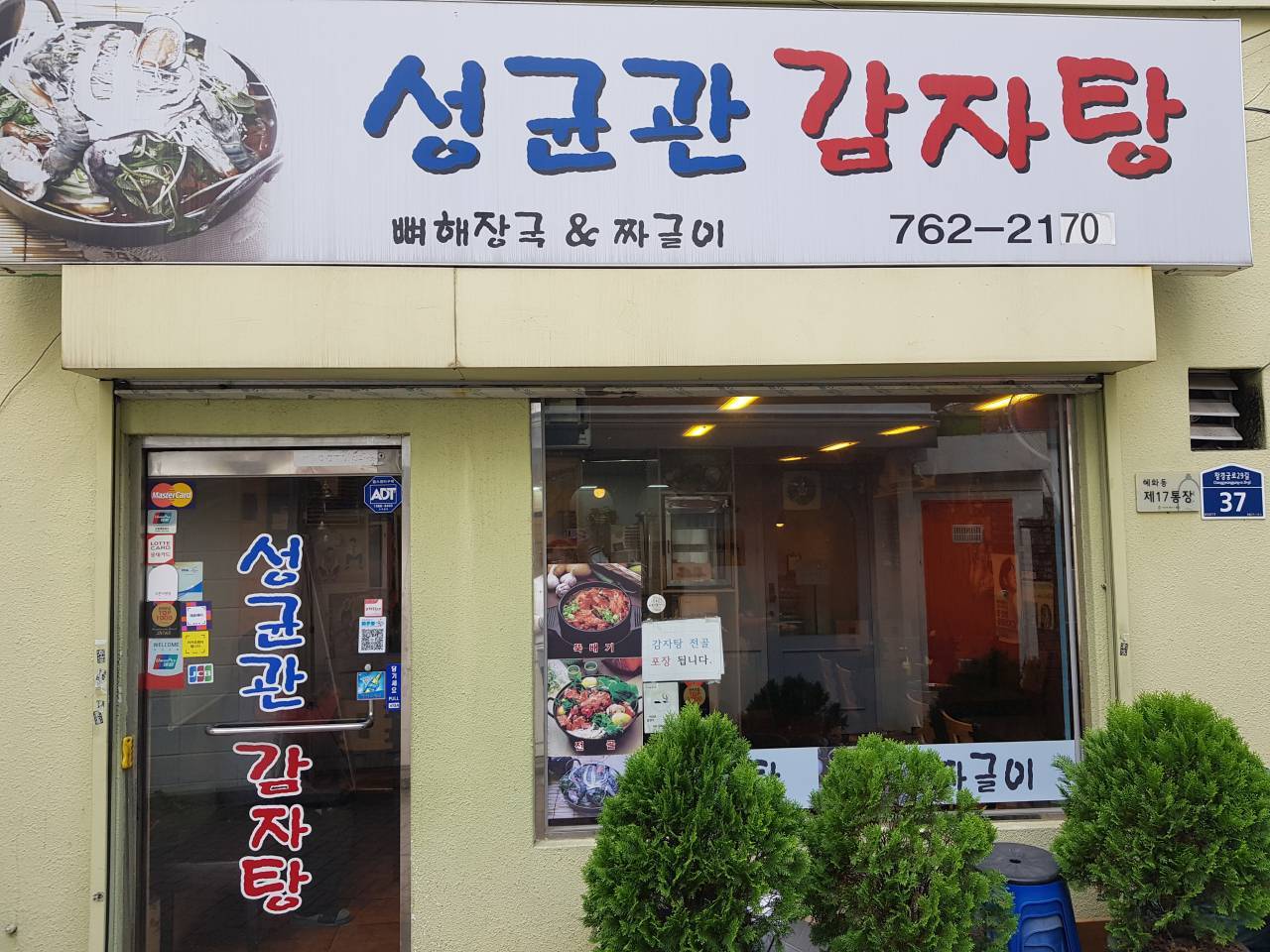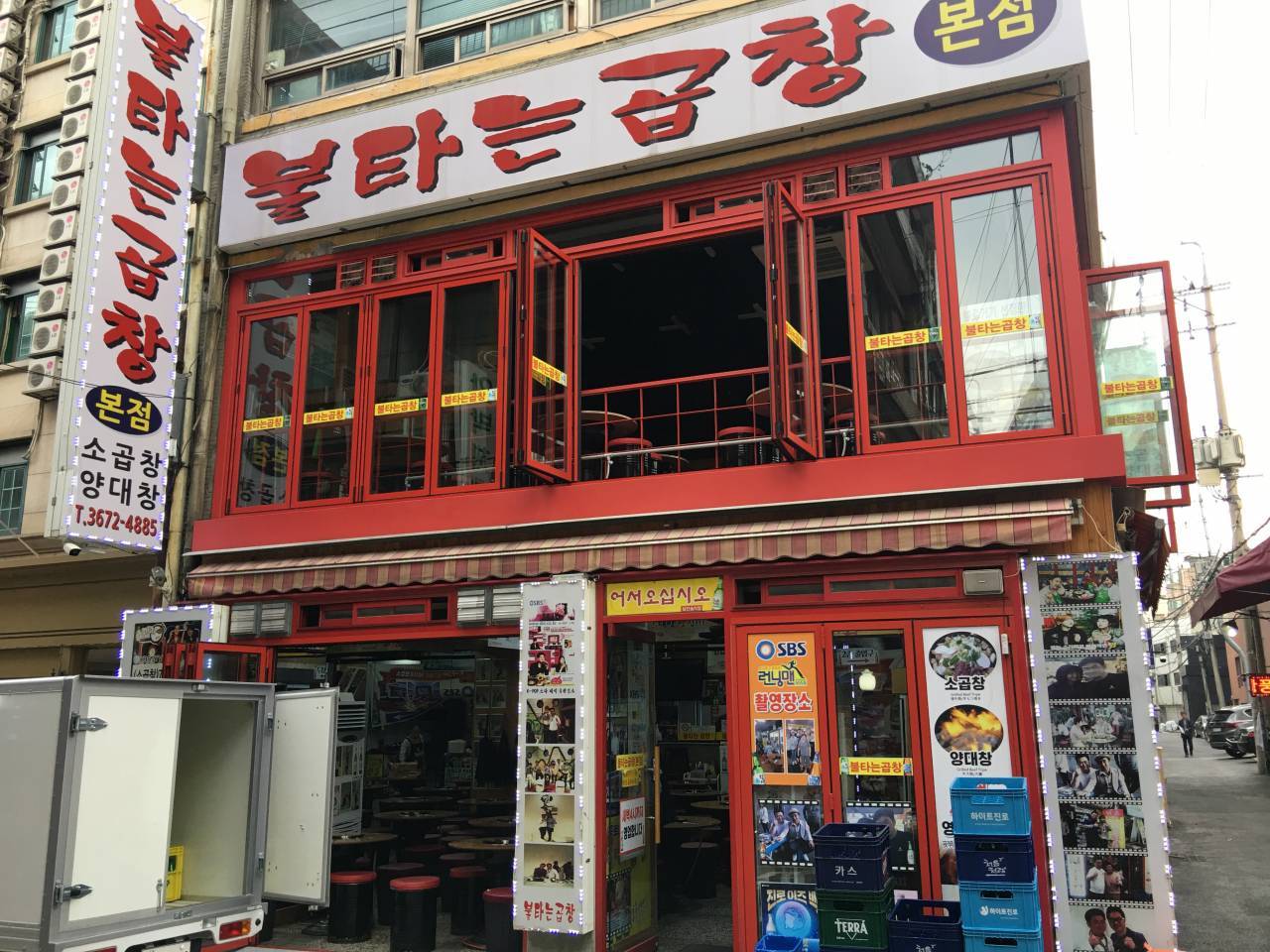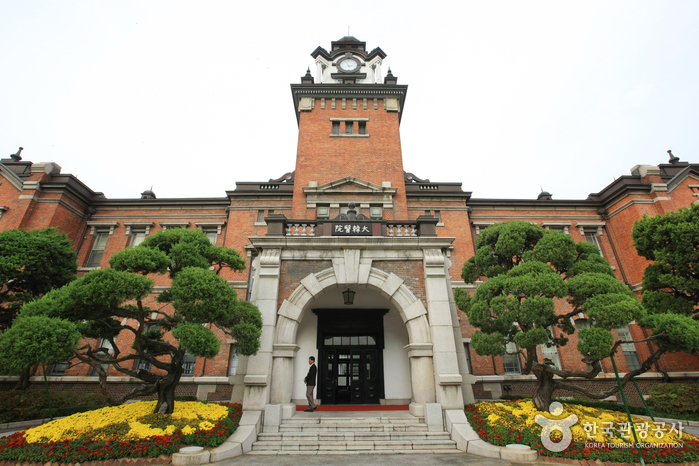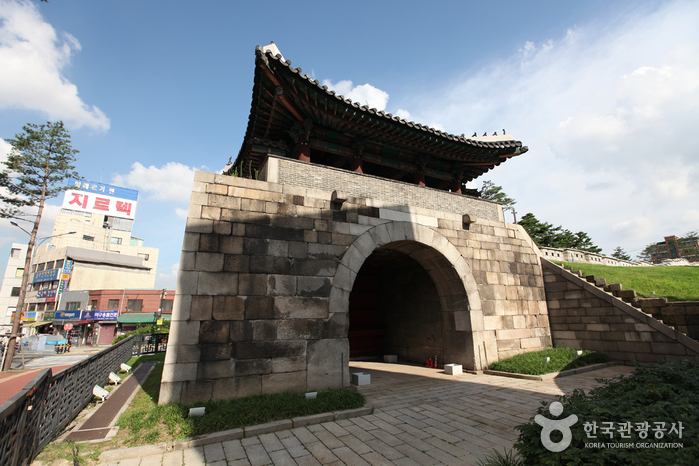Seonggyungwan Gamjatang (성균관감자탕)
8.4Km 2021-03-19
37, Changgyeonggung-ro 29-gil, Jongno-gu, Seoul
+82-2-762-2170
Experience gamjatang (pork back-bone stew), one of Korea’s representative stews. The best menu at this restaurant is pork back-bone hot pot. This is a Korean cuisine located in Changdeokgung Palace, Seoul.
Gogungmasil (고궁마실)
8.4Km 2020-05-04
229, Changgyeonggung-ro, Jongno-gu, Seoul
+82-2-763-9937
Gogungmasil is a hanbok rental shop located near Changgyeonggung Palace. Visitors can rent hanbok from Gogungmasil before going on a palace tour to Changgyeonggung and Changdeokgung Palaces.
Bultaneun Gopchang (불타는곱창)
8.4Km 2021-07-20
8, Jong-ro 35-gil, Jongno-gu, Seoul
+82-2-3672-4885
This Korean cuisine is located near Jongno 5(o)ga Station, Seoul. The representative menu is assorted pork intestines/assorted beef intestines. A restaurant specializing in Korean-style grilled intestines.
Seoul Daehan Hospital (서울 대한의원)
8.4Km 2021-12-23
101, Daehak-ro, Jongno-gu, Seoul
+82-2-2148-1842
Daehanuiwon (Daehan Medical Center) is an antique two-story brick building within the grounds of Seoul National University Hospital. It was established under the direct administration of the Uijeongbu (State Council), combining the Gwangjewon (under the Home Ministry), Gyeongseong Medical School and the Korean Red Cross Hospital (under the Royal Household).
Built in the Madubong Hill area, this location where Hamchunwon, the outer garden of Changgyeonggung Palace, once stood in 1484 (15th year of King Seongjong), was also once the site of Gyeongmogung Palace, where King Jeongjo enshrined the mortuary tablet of his birth father Crown Prince Sado Seja in 1776 (the year King Jeongjo ascended to the throne).
These places that held importance for the royal family were destroyed as the Japanese built Gyeongseong Empire University in its place. In 1907, with the announcement of the plan to establish Daehan Medical Center, construction began on the main building, seven wards and affiliated buildings. Construction was completed in November 1908.
The Daehan Medical Center opened in Gwangjewon, but upon Japanese colonization in 1910, its name was changed to the Japanese Viceroyalty Hospital. In 1926, it was included as a part of Gyeongseongjeguk University to become a university hospital. Since the liberation of Korea in 1945, it has been a hospital affiliated with Seoul National University.
Gwanghuimun Gate (광희문)
8.4Km 2021-02-24
344, Toegye-ro, Jung-gu, Seoul
+82-2-3700-3900
Gwanghuimun Gate is said to have been originally constructed in 1396, the 5th year of King Taejo, at the southeast of the capital city. It was often referred to as Sugumun Gate (water channel gate) and was actually used as a Sigumun, literally meaning “corpse gate,” as funeral processions passed through this gate when exiting to the east.
During the Imjin War (1592-1598), the fortress gate was destroyed to such a degree that it made finding the original location close to impossible. Nevertheless, reconstruction efforts were started in 1711 (37th year of King Sukjong) and the gate was restored together with the gate's watchtower. Gwanghuimun Gate remained intact even when the fortress walls were demolished to build tram tracks during the Japanese occupation, but it was later damaged during the Korean War and left neglected. In 1975, restoration work was carried out to relocate Gwanghuimun Gate to a site 15 meters south of its original location since it stood in the middle of the road.
LF Maestro - Hyundai Cheonho Branch [Tax Refund Shop] (LF 마에스트로 현대천호)
8.4Km 2024-04-23
1005, Cheonho-daero, Gangdong-gu, Seoul
-
Golden Dew - Hyundai Cheonho Branch [Tax Refund Shop] (골든듀 현대천호)
8.4Km 2024-04-18
1F Hyundai Department Store Cheonho Branch, 1005, Cheonho-daero, Gangdong-gu, Seoul
-
Beanpole - Hyundai Cheonho Branch [Tax Refund Shop] (빈폴 현대 천호점)
8.4Km 2024-04-22
1005, Cheonho-daero, Gangdong-gu, Seoul
-
8 Seconds - Hyundai Cheonho Branch [Tax Refund Shop] (에잇세컨즈 현대 천호점)
8.4Km 2024-04-23
1005, Cheonho-daero, Gangdong-gu, Seoul
-
Galaxy - Hyundai Cheonho Branch [Tax Refund Shop] (갤럭시 현대 천호점)
8.4Km 2024-04-23
1005, Cheonho-daero, Gangdong-gu, Seoul
-






![Golden Dew - Hyundai Cheonho Branch [Tax Refund Shop] (골든듀 현대천호)](http://tong.visitkorea.or.kr/cms/resource/70/2878870_image2_1.jpg)
 English
English
 한국어
한국어 日本語
日本語 中文(简体)
中文(简体) Deutsch
Deutsch Français
Français Español
Español Русский
Русский